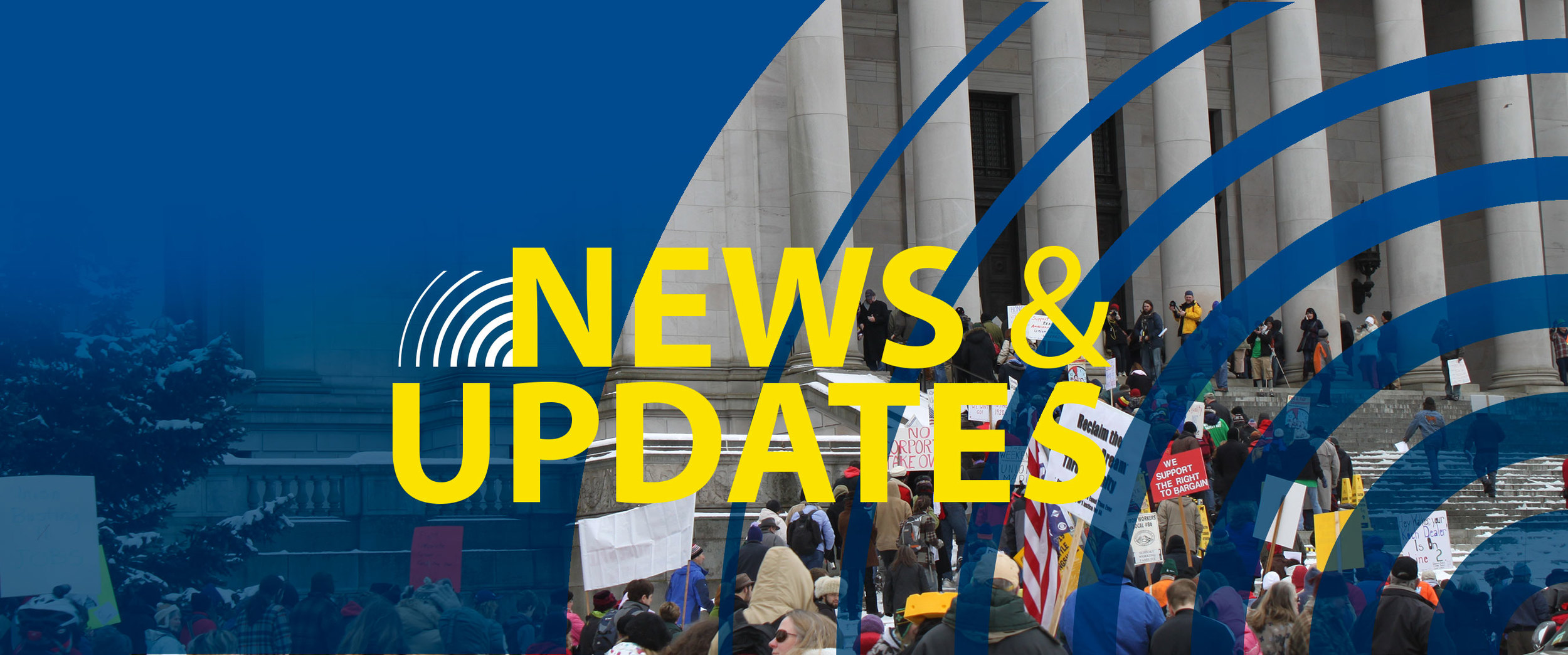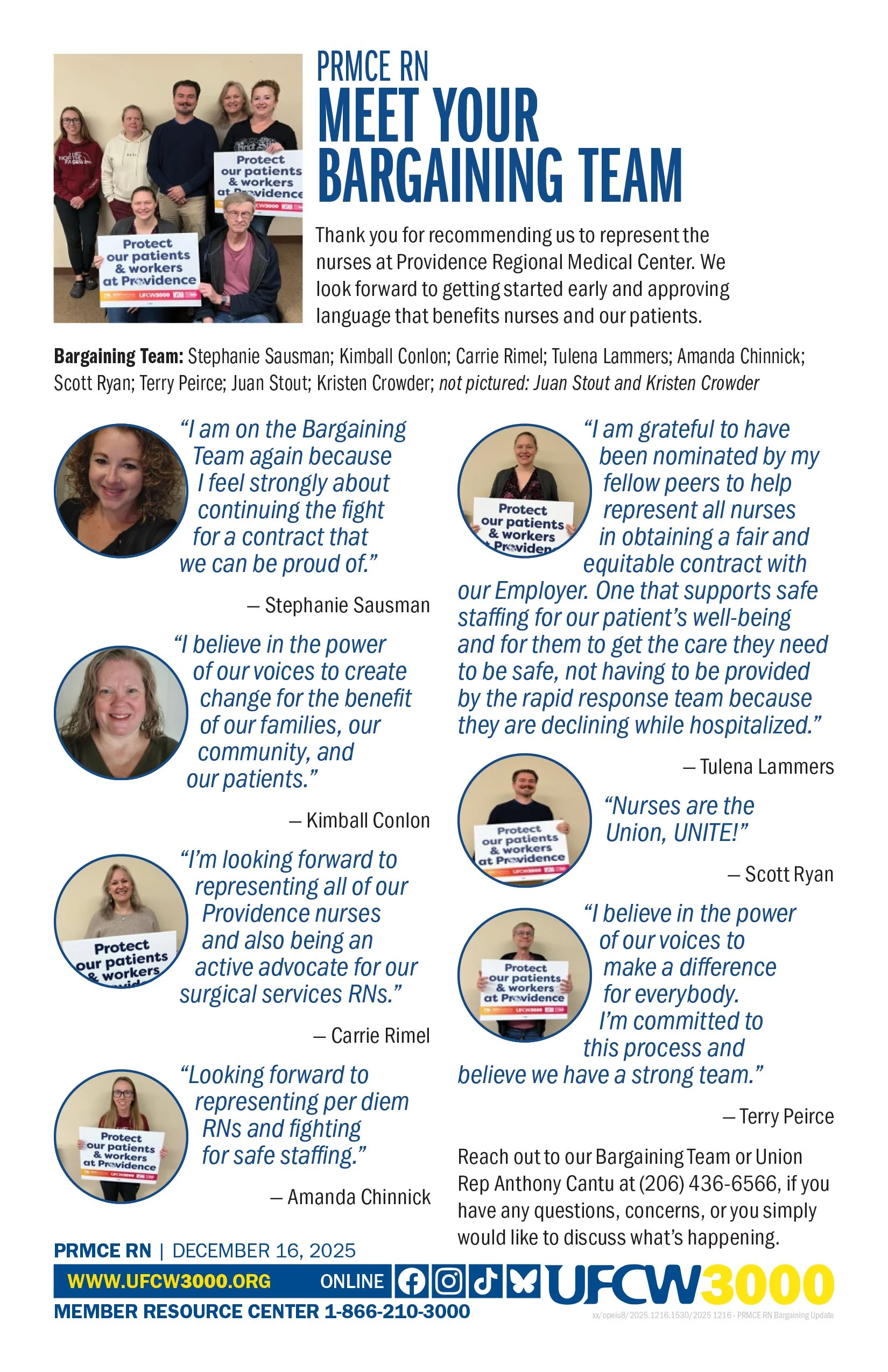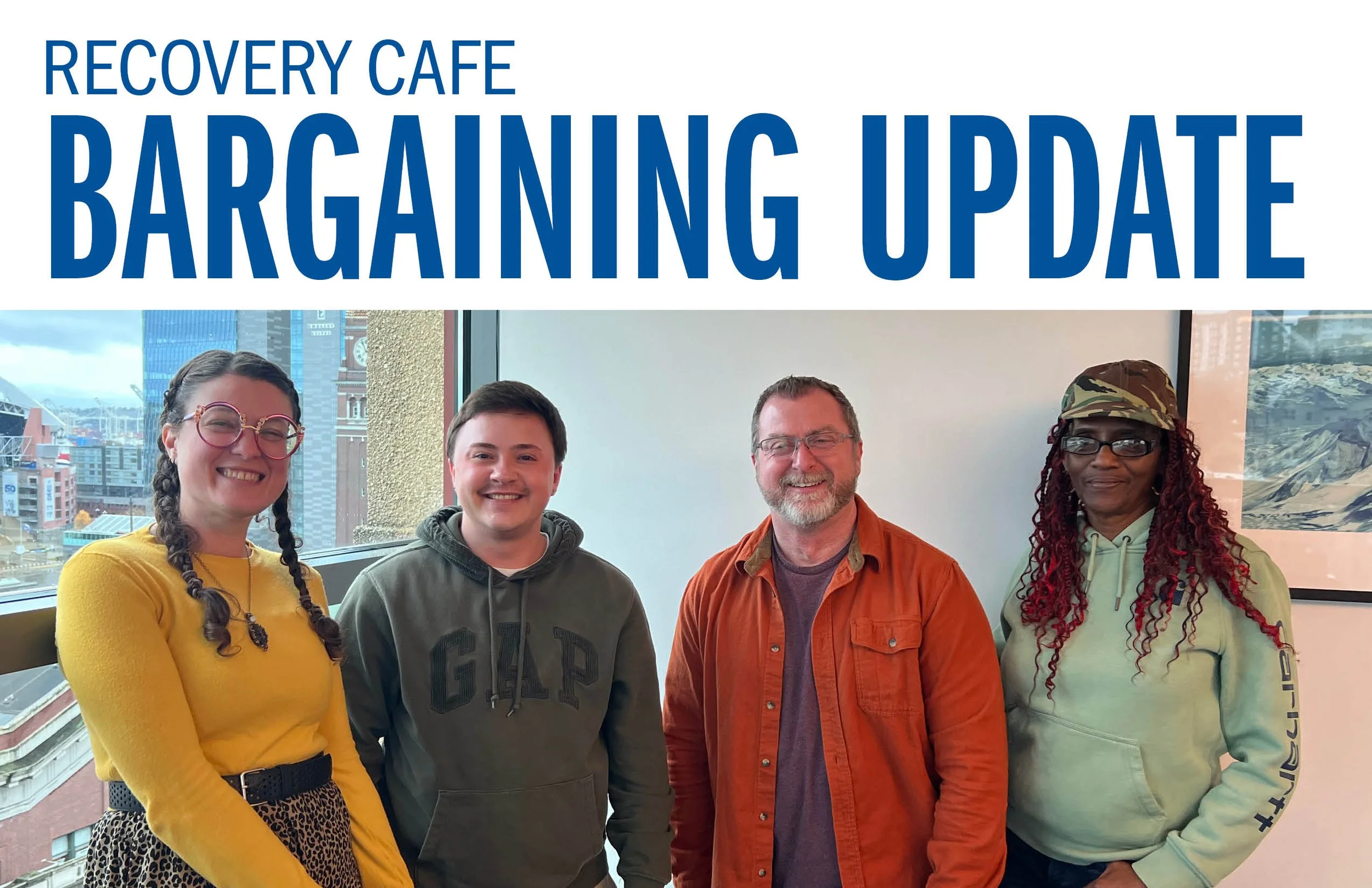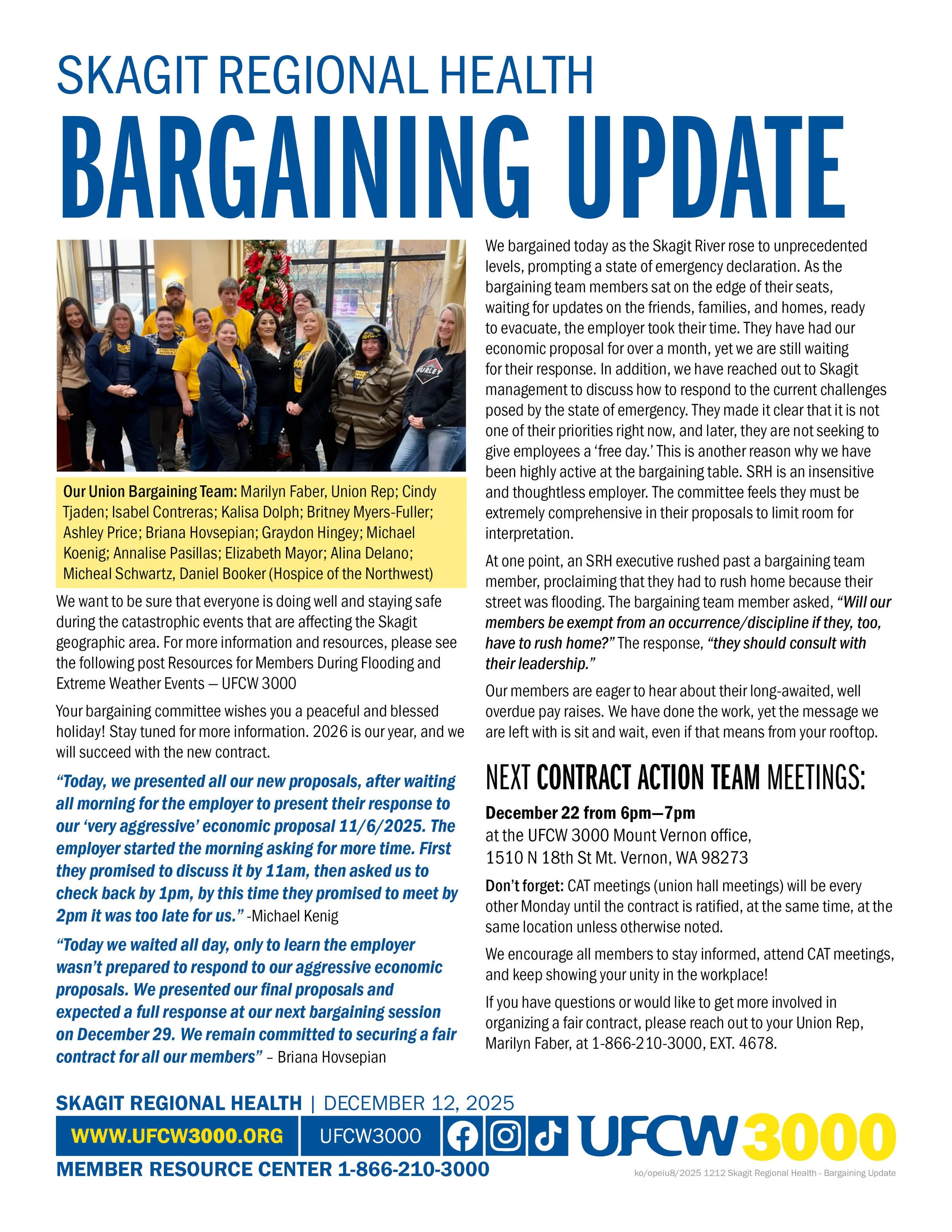Safety and Workers' Rights in Extreme Heat Situations
/More and more, we face hazardous weather events like extreme heat that can affect us at work and at home. In dangerously hot conditions you can take action to stay safe and healthy, like drinking plenty of fluids, staying out of the sun, checking on vulnerable people, and taking extra precautions when outside.
Under the Occupational Safety and Health Act (OSHA), employers have a duty to protect workers from recognized serious hazards in the workplace, including heat-related hazards. Especially if you work outside, be aware of your health and safety during any Excessive Heat Warning, and check in with your coworkers. If your workplace doesn’t feel safe, tell management and contact your Shop Steward or Union Rep as soon as you can. Find our FAQ on refusing unsafe work assignments here.
This kind of extreme weather is dangerous in our workplaces and our communities, which is why UFCW 3000 members work for climate policies that will help protect us and our future health.
Contact Us:
Find your Union Rep (call 1-866-210-3000 to be connected)
File a safety report by emailing safetyreport@ufcw21.org with your name, work location, contact information, and a description of the safety issue
Not a union member? Get in touch if you want to organize your workplace.
Check National Weather Service Excessive Heat Warnings in Washington:
Extreme Heat at Work
OSHA has three basic recommendations for safety in extreme heat are: 💧 water, 🪑 rest, and ⛱️ shade.
Under OSHA law, employers are responsible for providing workplaces free of known safety hazards. This includes protecting workers from extreme heat. An employer with workers exposed to high temperatures should establish a complete heat illness prevention program.
Provide workers with water, rest, and shade.
Allow new or returning workers to gradually increase workloads and take more frequent breaks as they acclimatize, or build a tolerance for working in the heat.
Plan for emergencies and train workers on prevention.
Monitor workers for signs of illness.
If you perform work outdoors for more than 15 minutes in a 60-minute period, you may be considered an Outdoor Worker in Washington, and your employer may have responsibilities to you under Washington State’s emergency heat exposure rules effective through June 15, 2022. When temperatures are at or above 89 degrees, employers must provide outdoor workers with cool water and additional paid cool-down rest time, and when the temperature is at or above 100 degrees, employers must also provide other ways to cool down like a shaded area and ensure you have a paid cool-down rest period of at least 10 minutes every two hours.
Safety & Heat-Related Illnesses Information
Heat illness can be very serious. Learn the symptoms of heat illness and basic safety recommendations so you can stay safe at work and home.
Information from Washington State Dept. of Health:
Information from King County Public Health:
Basic HEAT Safety Tips:
Spend more time in air-conditioned places if possible
Dress in lightweight clothing
Drink plenty of water and avoid drinks with caffeine, alcohol, and large amounts of sugar—sip frequently, don’t wait until you’re thirsty
Do not leave children or pets unattended in vehicles under any circumstances
Reduce activities that are tiring or take a lot of energy
When outside, limit the time you’re in direct sunlight
Do outdoor activities in the cooler morning and evening hours
During outdoor work, the Occupational Safety and Health Administration recommends scheduling frequent rest breaks in shaded or air conditioned environments
Anyone overcome by heat should be moved to a cool and shaded location. Heat stroke is an emergency! Call 9 11.
Learn the signs of heat-related illnesses:
Heat Stroke
WHAT TO LOOK FOR:
High body temperature (103°F or higher)
Hot, red, dry, or damp skin
Fast, strong pulse
Headache
Dizziness
Nausea
Confusion
Losing consciousness (passing out)
WHAT TO DO
Call 911 right away—heat stroke is a medical emergency
Move the person to a cooler place
Help lower the person’s temperature with cool cloths or a cool bath
Do not give the person anything to drink
Heat Exhaustion
WHAT TO LOOK FOR:
Heavy sweating
Cold, pale, and clammy skin
Fast, weak pulse
Nausea or vomiting
Muscle cramps
Tiredness or weakness
Dizziness
Headache
Fainting (passing out)
WHAT TO DO:
Move to a cool place
Loosen your clothes
Put cool, wet cloths on your body or take a cool bath
Sip water
Get medical help right away if:
You are throwing up
Your symptoms get worse
Your symptoms last longer than 1 hour
Heat Cramps
WHAT TO DO:
Stop physical activity and move to a cool place
Drink water or a sports drink
Wait for cramps to go away before you do any more physical activity
Get medical help right away if:
Cramps last longer than 1 hour
You’re on a low-sodium diet
You have heart problems
WHAT TO LOOK FOR:
Heavy sweating during intense exercise
Muscle pain or spasms





































